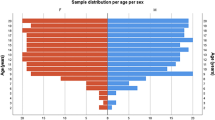Abstract
A new approach to measuring bone properties at the calcaneus using ultrasound parametric imaging has recently emerged. However, an additional source of observer-related error is the substantial regional variations in the pattern of ultrasound parameters. The contribution of intra-observer and inter-observer variability to the coefficient of variation can be eliminated using an algorithm which selects the region of interest (ROI) completely automatically. The objective of the present study was the clinical assessment of an automatic ROI for both broadband ultrasonic attenuation (BUA) and speed of sound (SOS) measurement using ultrasound parametric imaging. The automatic ROI was defined as the circular region of lowest attenuation in the posterior tuberosity of the calcaneus. We have tested this algorithm using clinical images of the calcaneus from 265 women. Mean coefficients of variation were 1.6% (95% confidence interval 1.4%−1.9%) and 0.26% (95% confidence interval 0.23%−0.32%) for BUA and SOS respectively (standardized CV was 2.1% for BUA and 2.6% for SOS). Z-scores in an osteoporotic group were −0.61 and −0.52 for BUA and SOS respectively. In healthy women, the age-related decline was −0.50 dB/ MHz per year (0.7%/year) for BUA and −1.2 m/s per year (0.08%/year) for SOS. In the subgroup of healthy postmenopausal women, using stepwise multiple regression, we found that BUA was predicted best by years since menopause (YSM) and weight, with overall modelr 2=0.28; SOS was predicted best by YSM only (r 2=0.21). Neither the range of biological variation of ultrasound parameters nor the clinical value were affected by the choice of the region of lowest attenuation for measurement. The automatic procedure was totally independent of operator interaction, therefore excluding loss of precision due to intra- or inter-observer variability. The results showed the high precision and robustness of the procedure. These factors make this approach viable for routine clinical use.
Similar content being viewed by others
References
Glüer C, Wu, C, Jergas M, Goldstein S, Genant H. Three quantitative ultrasound parameters reflect bone structure. Calcif Tissue Int 1994;55:46–52.
Hans D, Arlot ME, Schott AM, Roux JP, Kotzki PO, Meunier PJ. Do ultrasound measurements on the os calcis reflect more the bone microarchitecture than the bone mass?: a two-dimensional histomorphometric study. Bone 1995;16:295–300.
Bauer DC, Glüer CC, Genant HK, Stone K. Quantitative ultrasound and vertebral fracture in postmenopausal women. J Bone Miner Res 1995; 10:353–8.
Schott AM, Weil-Engerer S, Hans D, Duboeuf F, Delmas PD, Meunier PJ. Ultrasound discriminates patients with hip fracture equally well as energy X-ray absorptiometry and independently of bone mineral density. J Bone Miner Res 1995;10:243–9.
Langton CM, Palmer SB, Porter SW. The measurement of broadband ultrasonic attenuation in cancellous bone. Eng Med 1994;13:89–91.
Rossman P, Zagzebski J, Mesina C, Sorenson J, Mazess R. Comparison of speed of sound and ultrasound attenuation in the os calcis to bone density of the radius, femur, and lumbar spine. Clin Phys Physiol Meas 1989;10:353–60.
Miller CG, Herd RJM, Ramalingam T, Fogelman I, Blake GM. Ultrasonic velocity measurements through the calcaneus: which velocity should be measured? Osteoporos Int 1993;3:31–5
Laugier P, Giat P, Berger G. Broadband ultrasonic attenuation imaging: a new imaging technique of the os calcis. Calcif Tissue Int 1994;54:83–6.
Heaney R, Avioli L, Chesnut C, Lappe J, Recker R, Brandenburger G. Osteoporotic bone fragility detection by ultrasound transmission velocity. JAMA 1989;26:2986–90.
Cadossi R, Cane V. Pathways of transmission of ultrasound energy through the distal metaphysis of the second phalanx of pigs: an in vitro study. Osteoporos Int 1996; 6:196–206.
Orgee JM, Foster H, McCloskey EV, Khan S, Coombes G, Kanis JA. A precise method for the assessment of tibial ultrasound velocity. Osteoporos Int 1996;1:1–7.
Stegman MR, Heaney RP, Travers-Gustafson D, Leist J. Cortical ultrasound velocity as an indicator of bone status. Osteoporos Int 1995;5:349–53.
Laugier P, Fournier B, Berger G. Ultrasound parametric imaging of the calcaneus: in vivo results with a new device. Calcif Tissue Int 1996;58:326–31.
Roux C, Fournier B, Laugier P, et al. Broadband ultrasound attenuation imaging: a new imaging method in osteoporosis. J Bone Miner Res 1996;11:1112–8.
Glüer CC, Vhlensiek M, Faulkner KG, Engelke K, Black D, Genant HK. Site-matched calcaneal measurements of broad-band ultrasound attenuation and single X-ray absorptiometry: do they measure different skeletal properties? J Bone Miner Res 1992;7:1071–9.
Brooke-Wavell K, Jones PRM, Pye DW. Ultrasound and dual X-ray absorptiometry measurement of the calcaneus: influence of region of interest location. Calcif Tissue Int 1995;57:20–4.
Glüer CC, Blake G, Lu Y, Blunt BA, Jergas M, Genant HK. Accurate assessment of precision errors: how to measure the reproducibility of bone densitometry techniques. Osteoporos Int 1995;5:262–70.
Schott AM, Hans D, Garnero P, Sornay-Rendu E, Delmas PD, Meunier PJ. Age-related changes in os calcis utrasonic indices: a two-year prospective study. Osteoporos Int 1995;5:478–83.
Vogel JM, Wasnich RD, Ross PD. The clinical relevance of calcaneus bone mineral measurement: a review. J Bone Miner 1988;5:35–58.
Chappard C, Laugier P, Fournier B, Roux C, Berger G. Assessment of the relationship between broadband ultrasound attenuation and bone mineral density at the calcaneus using BUA imaging and DXA. Osteoporos Int 1997 (in press).
Lees B, Stevenson JC. Preliminary evaluation of a new ultrasound bone densitometer. Calcif Tissue Int 1993:53:149–52.
Krieg MA, Thiébaud D, Burckhardt P. Quantitative ultrasound of bone in institutionalized elderly women: a cross-sectional and longitudinal study. Osteoporos Int 1996;6:189–95.
Hans D, Schott AM, Arlot ME, Sornay E, Delmas PD, Meunier PJ. Influence of anthropometric parameters on ultrasound measurements of the os calcis. Osteoporos Int 1995;5:371–6.
Author information
Authors and Affiliations
Rights and permissions
About this article
Cite this article
Fournier, B., Chappard, C., Roux, C. et al. Quantitative ultrasound imaging at the calcaneus using an automatic region of interest. Osteoporosis Int 7, 363–369 (1997). https://doi.org/10.1007/BF01623779
Issue Date:
DOI: https://doi.org/10.1007/BF01623779




